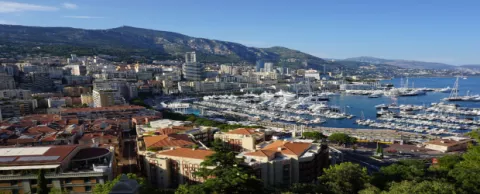
The Principality of Monaco measures just two square kilometres in size yet boasts a population of nearly 38,000—in addition to 30,000 workers who cross the border daily from France and Italy. Over the past 150 years, Monaco has expanded its size by 20%, tacking on an additional 40 hectares by extending the Port Hercules and developing the industrially driven Fontvieille district, built from reclaimed land along the coastline. Now the principality is embarking on its most ambitious extension yet—a 6-hectare neighbourhood that will be the first smart district in the city-state. Here’s a look into the principality’s €2 billion, 10-year plan that’s designed to serve as a model for other cities to follow when drafting smart neighbourhood proposals.-Bruno De Man
Designing an eco-district
In the 1970s, more than 20 hectares were reclaimed from the sea to form the newest neighbourhood in Monaco, Fontvieille. “Fontvieille was much bigger in terms of surface, but the spirit was not at all the same at that time; I don’t think the environment was considered as carefully in the 70s,” explains Philippe Jan, director of Bouygues Travaux Publics, the construction company managing the project. “It’s not easy as a concept to make civil work environmentally friendly.” This is the reason why the latest project to debut, Anse du Portier, has a 10-year time span. The offshore urban extension project will connect seamlessly to the coast, extending from the Larvotto Marine Reserve in the northeast to the area around the Spélugues coral reef in the southwest. The shape of the 6-hectare is designed to fit naturally into Monaco’s coastline and work with the flow of the current. Not only have construction methods been carefully considered to avoid any significant impact on the environment, they’re also removing invasive marine life in the process while safeguarding protected species like noble pen shells. As for the district itself, Monaco is looking to attain environmental certificates like Clean Ports and BiodiverCITY, all part of the principality’s plan to become carbon neutral by 2050. Forty percent of the energy in the new neighbourhood will be generated through solar energy panels placed on rooftops, as well as thermal pumps powering heating and cooling systems.
When the 60,000-square-metre district debuts in 2025, it’ll be the first “smart” neighbourhood of its kind in Monaco, with connected buildings, renewable energy resources and a bevy of artificial habitats. In a CNN article, Jean-Luc Nguyen, director of the government's urban extension project, claims this is what “differentiates Monaco's eco district from other offshore extension projects around the world.” By striving to incorporate the latest technology and solutions from around the globe, Monaco is proving that a city’s size doesn’t have to be a limiting factor when it comes to the possibilities of smart city potential, with even the sea offering some of the most innovative solutions of the 21st century.



